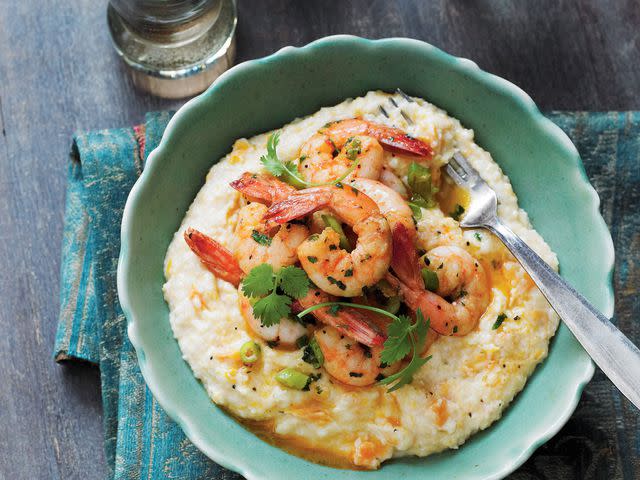Everything You Need To Know About The Different Types Of Grits
Discover the different types of grits.
Fact checked by Jillian Dara
Before you can master making a perfect pot of grits, you've got to choose the right ground corn for the job. From casseroles to creamy sides to simply topped with butter, however you like to eat grits, use the type that is right for your recipe. Read on to learn about the most commonly found varieties of grits, from artisanal stone-ground to "get the job done" instant grits, and tips for preparing them.

Types of Grits
Stone-ground Grits
Stone-ground grits are whole dried corn kernels that have been coarsely ground the old-fashioned way: between the two stones of a grist mill. Because the entire kernel is ground, including the germ, stone-ground grits often have a speckled appearance, a more toothsome texture, and a rich corn flavor. Stone-ground grits are less processed, which makes them more perishable, so store them in the freezer, not the pantry.
Quick or Regular Grits
The only difference between these types is in granulation. Quick grits are ground fine and cooked in five minutes. Regular grits have medium grind and cook in ten minutes.
Instant Grits
Otherwise known as "grits from a packet." These fine-textured grits have been precooked and dehydrated, so all you need is boiling water. They're fast for an easy breakfast, but they're also not as naturally flavorful.
Hominy Grits
Corn kernels soaked in a lime or lye solution, which softens the tough outer hulls, make hominy grits. The outer hulls of hominy are removed after rinsing. Hominy is sold dried, ready-to-eat in cans (delicious in soups and stews), or dried and coarsely ground into hominy grits.

More Tips for Good Grits
Cornmeal Is Not the Same as Grits
Don't confuse grits with cornmeal. "Dent corn" makes grits and cornmeal (the kernels are softer with a slight dent in the top), but it has a finely ground texture that works well in baked goods like cornbread and as a breading for fish.
Salt the Water
To make good grits, salt your water generously. Grits absorb more salt before they are cooked rather than after.
Whisk Often
Unless you're making grits in your slow cooker, the cooking process is hands-on and can take some time, especially if you're using stone-ground grits, which can take 45 minutes to an hour to prepare. The most important thing is to use a whisk and whisk often. This will help release more starch for the smoothest, creamiest results.
Consider Baking Grits
If you don't want to stand over the stovetop stirring, you can still make lusciously creamy grits. Try baking them in the oven, which only requires a few minutes of hands-on cooking.
Grit Color Means Different Corn
Different types of corn differentiate yellow, white, and blue grits. Some say that yellow grits have a more robust corn flavor than white grits, which are more delicate.
Are Grits Healthy?
We know what you're thinking: How could grits possibly be healthy? Southerners are known for stewing our grits with plenty of butter. But if you're looking for a health-conscious option, certain types of grits can be healthier than others.
Stone-ground grits, made from whole corn kernels, contain more vitamins and minerals than regular, highly processed grits. The corn kernel pericarp and germ are removed, leaving just the starch when processing quick, instant, or regular grits. Without this processing, stone ground grits contain more fiber and nutrients than regular grits.
Grits Recipes
There’s more to grits than the classic creamy breakfast side dish or spicy Shrimp and Grits. Whether you have stone-ground grits or a quicker version on hand, here are some recipes for great grits dishes:
For more Southern Living news, make sure to sign up for our newsletter!
Read the original article on Southern Living.
